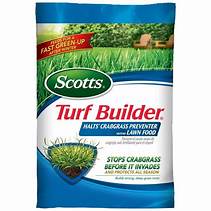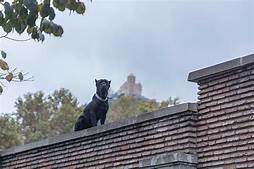Is Scotts Crabgrass Preventer Safe for Pets?
Scotts Crabgrass Preventer is a common herbicide used to prevent crabgrass in lawns. It is typically applied in the spring or fall, and it can be effective at preventing crabgrass for up to six months. However, some pet owners are concerned about the safety of Scotts Crabgrass Preventer for their pets.

What is Scotts Crabgrass Preventer?
Scotts Crabgrass Preventer is a pre-emergent herbicide that contains the active ingredient pendimethalin. Pendimethalin works by preventing crabgrass seeds from germinating and growing. It is typically applied to lawns in the spring or fall, when crabgrass seeds are most likely to germinate.
Is Scotts Crabgrass Preventer Safe for Pets?
The Environmental Protection Agency (EPA) has classified Scotts Crabgrass Preventer as a "caution" for pets. This means that the product can be harmful to pets if they are exposed to it. The most common symptoms of exposure to Scotts Crabgrass Preventer in pets include vomiting, diarrhea, and skin irritation. In severe cases, exposure to Scotts Crabgrass Preventer can lead to liver damage and death.
How to Protect Pets from Scotts Crabgrass Preventer
There are several things you can do to protect your pets from Scotts Crabgrass Preventer:
- Keep pets off of the lawn after it has been treated with Scotts Crabgrass Preventer. The product label recommends that you keep pets off of the lawn for at least 24 hours after it has been treated.
- Wash your pet's paws and belly if they have been exposed to Scotts Crabgrass Preventer. If your pet has been exposed to Scotts Crabgrass Preventer, wash their paws and belly with soap and water as soon as possible.
- Call your veterinarian if your pet shows any signs of exposure to Scotts Crabgrass Preventer. If your pet shows any signs of exposure to Scotts Crabgrass Preventer, such as vomiting, diarrhea, or skin irritation, call your veterinarian immediately.
Alternatives to Scotts Crabgrass Preventer
There are several alternative methods for preventing crabgrass in lawns that are safer for pets. These methods include:
- Using a natural crabgrass preventer. There are several natural crabgrass preventers available that are safe for pets. These products typically contain ingredients such as corn gluten meal or iron sulfate.
- Pulling crabgrass by hand. If you have a small lawn, you can pull crabgrass by hand. This is a time-consuming method, but it is effective at preventing crabgrass from spreading.
- Using a crabgrass barrier. A crabgrass barrier is a physical barrier that prevents crabgrass seeds from germinating. Crabgrass barriers can be made from materials such as straw, newspaper, or plastic.
Conclusion
Scotts Crabgrass Preventer is a common herbicide used to prevent crabgrass in lawns. However, the product can be harmful to pets if they are exposed to it. There are several things you can do to protect your pets from Scotts Crabgrass Preventer, such as keeping them off of the lawn after it has been treated and washing their paws and belly if they have been exposed to the product. There are also several alternative methods for preventing crabgrass in lawns that are safer for pets.
Declaration: All article resources on this website, unless otherwise specified or labeled, are collected from online resources. If the content on this website infringes on the legitimate rights and interests of the original author, you can contact this website to delete it.



